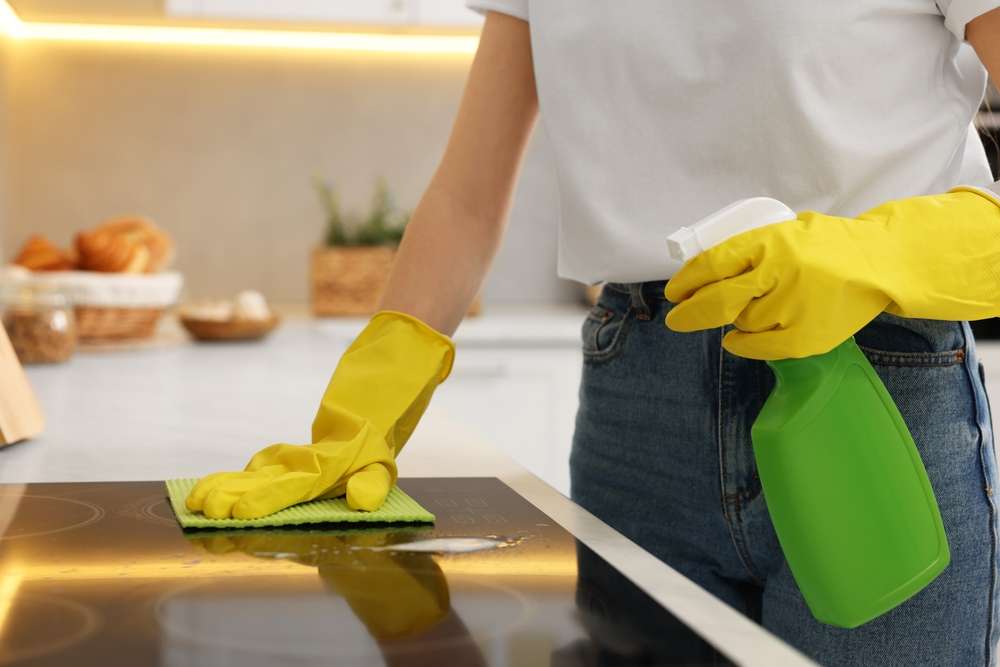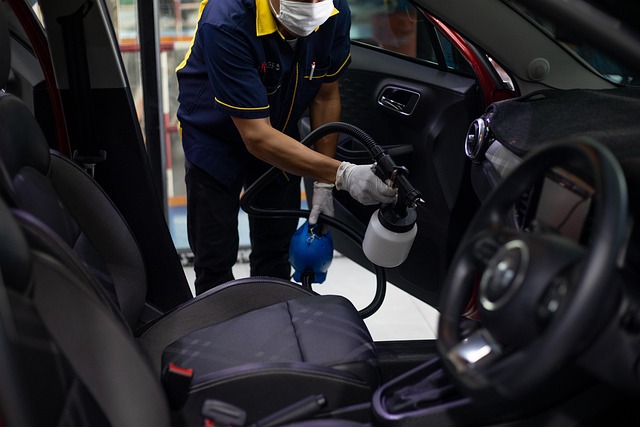Effective Methods to Clean Your Sticky Kitchen Surfaces
Kitchen surfaces can quickly become sticky from cooking residue, spills, and everyday use. Understanding the right cleaning techniques and products helps maintain a hygienic cooking environment. From countertops to cabinet doors, sticky buildup requires targeted approaches that remove grime without damaging surfaces. The key lies in selecting appropriate cleaning solutions and methods that effectively dissolve grease and food particles while preserving your kitchen's finish.

A sticky kitchen can make cooking and food preparation frustrating and unsanitary. Grease, food spills, and cooking vapors create stubborn residue that accumulates on various surfaces throughout your kitchen. Regular cleaning prevents this buildup, but once stickiness sets in, specific techniques and products become necessary to restore your kitchen’s cleanliness.
Best Ways To Clean Sticky Kitchen Countertops
Countertops bear the brunt of kitchen activities and often develop the most noticeable sticky residue. Different countertop materials require specific cleaning approaches. For laminate surfaces, warm soapy water combined with a degreasing agent effectively removes most sticky buildup. Natural stone countertops like granite or marble need pH-neutral cleaners to avoid etching. Quartz countertops handle stronger cleaning solutions well, making them easier to maintain when sticky residue accumulates.
Start by removing all items from the countertop and wiping away loose debris. Apply your chosen cleaning solution and let it sit for several minutes to break down the sticky substances. Use a microfiber cloth or soft sponge to scrub gently, working in circular motions. Rinse thoroughly with clean water and dry completely to prevent water spots.
Kitchen Cleaning Spray Solutions for Sticky Surfaces
Commercial kitchen cleaning sprays offer convenient solutions for tackling sticky surfaces throughout your kitchen. Degreasing sprays specifically target oil-based residues that create stickiness on stovetops, range hoods, and cabinet surfaces. Multi-surface cleaners provide versatility for various kitchen materials, while specialized products address specific challenges like burnt-on food or heavy grease accumulation.
When selecting a kitchen cleaning spray, consider the types of surfaces you need to clean and any sensitivities to chemical ingredients. Some effective options include enzyme-based cleaners that break down organic matter, citrus-based degreasers that cut through grease naturally, and alkaline cleaners for heavy-duty degreasing tasks.
Cleaning Sticky Cabinet Doors and Hardware
Cabinet doors and handles collect sticky residue from cooking vapors and frequent touching with dirty hands. Wood cabinets require gentle cleaning to preserve their finish, while painted or laminated surfaces can handle stronger cleaning solutions. Remove cabinet hardware when possible for thorough cleaning, as grease and grime accumulate in crevices around hinges and handles.
Create a cleaning solution appropriate for your cabinet material and apply it with a soft cloth. Work from top to bottom to prevent dripping onto already-cleaned areas. Pay special attention to areas around handles and the tops of upper cabinets where grease vapors settle. Clean hardware separately in warm soapy water, using an old toothbrush to reach detailed areas.
Addressing Sticky Stovetops and Appliance Surfaces
Stovetops develop sticky residue from cooking spills and grease splatter, requiring regular maintenance to prevent buildup. Electric coil burners need careful cleaning around the heating elements, while glass-top stoves require non-abrasive methods to avoid scratching. Gas stovetops allow for more aggressive cleaning since burner grates and drip pans are typically removable.
For routine cleaning, remove burner grates and drip pans when possible and soak them in warm soapy water. Clean the stovetop surface with appropriate cleaners, avoiding harsh abrasives on delicate surfaces. Microwave interiors, refrigerator surfaces, and other appliances also accumulate sticky residue that responds well to targeted cleaning approaches.
Natural Cleaning Solutions for Sticky Kitchen Surfaces
Homemade cleaning solutions offer effective alternatives to commercial products for removing sticky kitchen residue. White vinegar mixed with warm water creates an excellent degreasing solution for most surfaces. Baking soda paste works well for scrubbing stubborn sticky spots without scratching delicate surfaces. Lemon juice provides natural acidity that cuts through grease while leaving a fresh scent.
Combine these natural ingredients strategically for enhanced cleaning power. A mixture of vinegar, dish soap, and warm water creates an effective all-purpose cleaner. Adding baking soda to this mixture creates a gentle abrasive for tougher cleaning tasks. Essential oils like tea tree or lavender can be added for antimicrobial properties and pleasant fragrance.
| Product Type | Brand Examples | Key Features | Cost Estimation |
|---|---|---|---|
| All-Purpose Cleaner | Simple Green, Method | Multi-surface safe, degreasing | $3-8 per bottle |
| Degreasing Spray | Easy-Off, Goo Gone | Heavy-duty grease removal | $4-10 per bottle |
| Natural Cleaner | Seventh Generation, Mrs. Meyer’s | Plant-based, eco-friendly | $3-7 per bottle |
| Specialty Kitchen Cleaner | Weiman, Bar Keepers Friend | Surface-specific formulations | $5-12 per bottle |
Prices, rates, or cost estimates mentioned in this article are based on the latest available information but may change over time. Independent research is advised before making financial decisions.
Preventing Future Sticky Buildup in Your Kitchen
Prevention strategies significantly reduce the effort required for deep cleaning sticky kitchen surfaces. Install proper ventilation to remove cooking vapors before they settle on surfaces. Clean spills immediately to prevent them from hardening into sticky residue. Establish regular cleaning routines that address different areas of your kitchen systematically.
Use splatter screens while cooking to minimize grease distribution, and wipe down frequently touched surfaces daily. Apply protective treatments to appropriate surfaces, such as sealers for natural stone or protective films for stainless steel appliances. These proactive measures maintain your kitchen’s cleanliness and reduce the frequency of intensive cleaning sessions.
Maintaining a clean kitchen requires consistent effort and the right cleaning products for your specific surfaces and needs. By understanding effective cleaning techniques and implementing regular maintenance routines, you can keep your kitchen surfaces free from sticky buildup and create a more pleasant cooking environment.



